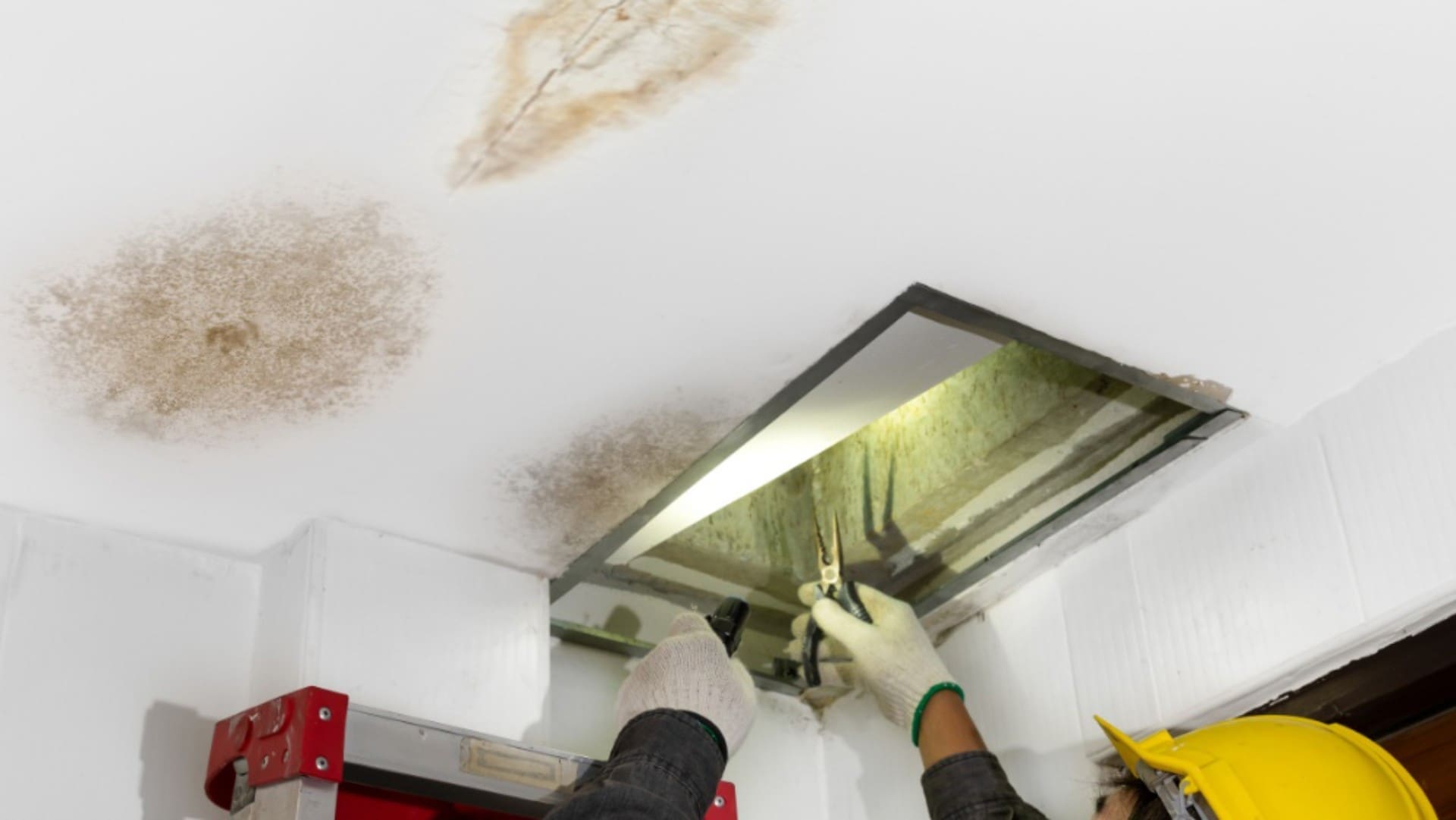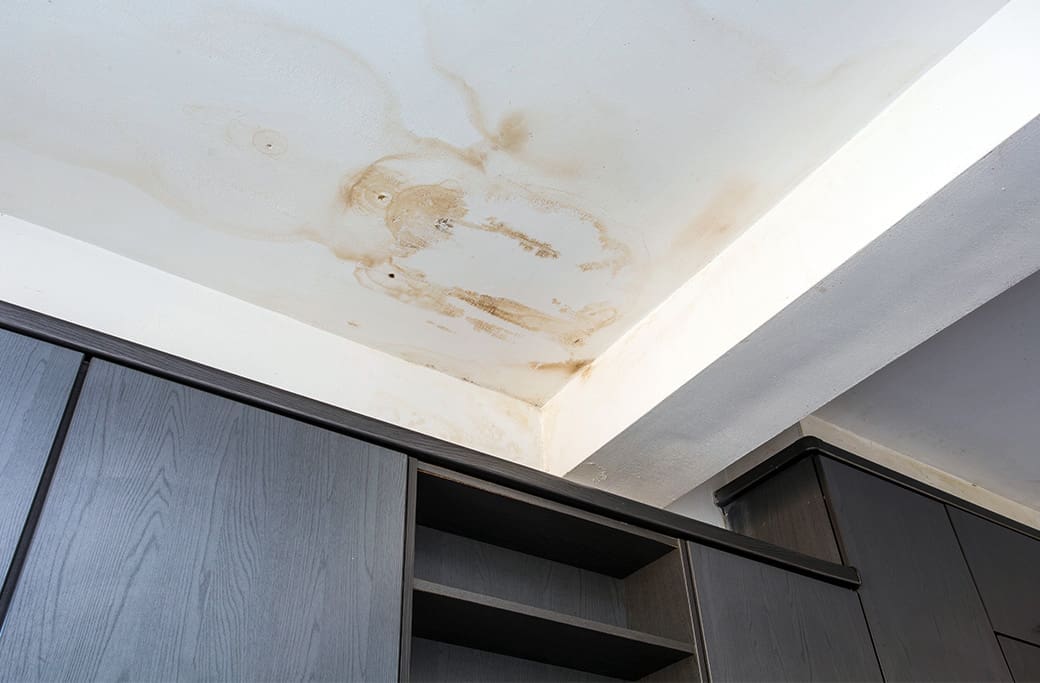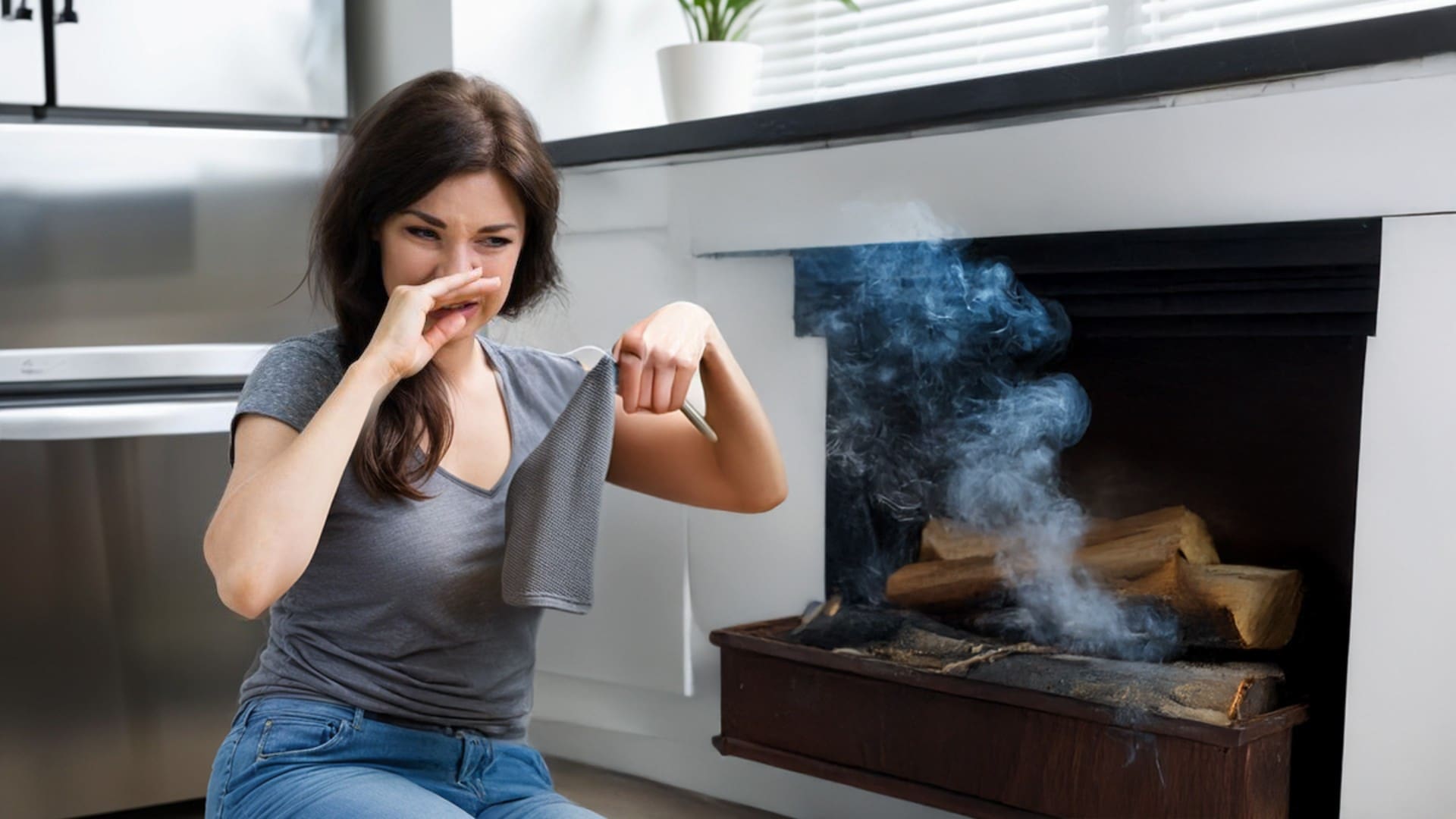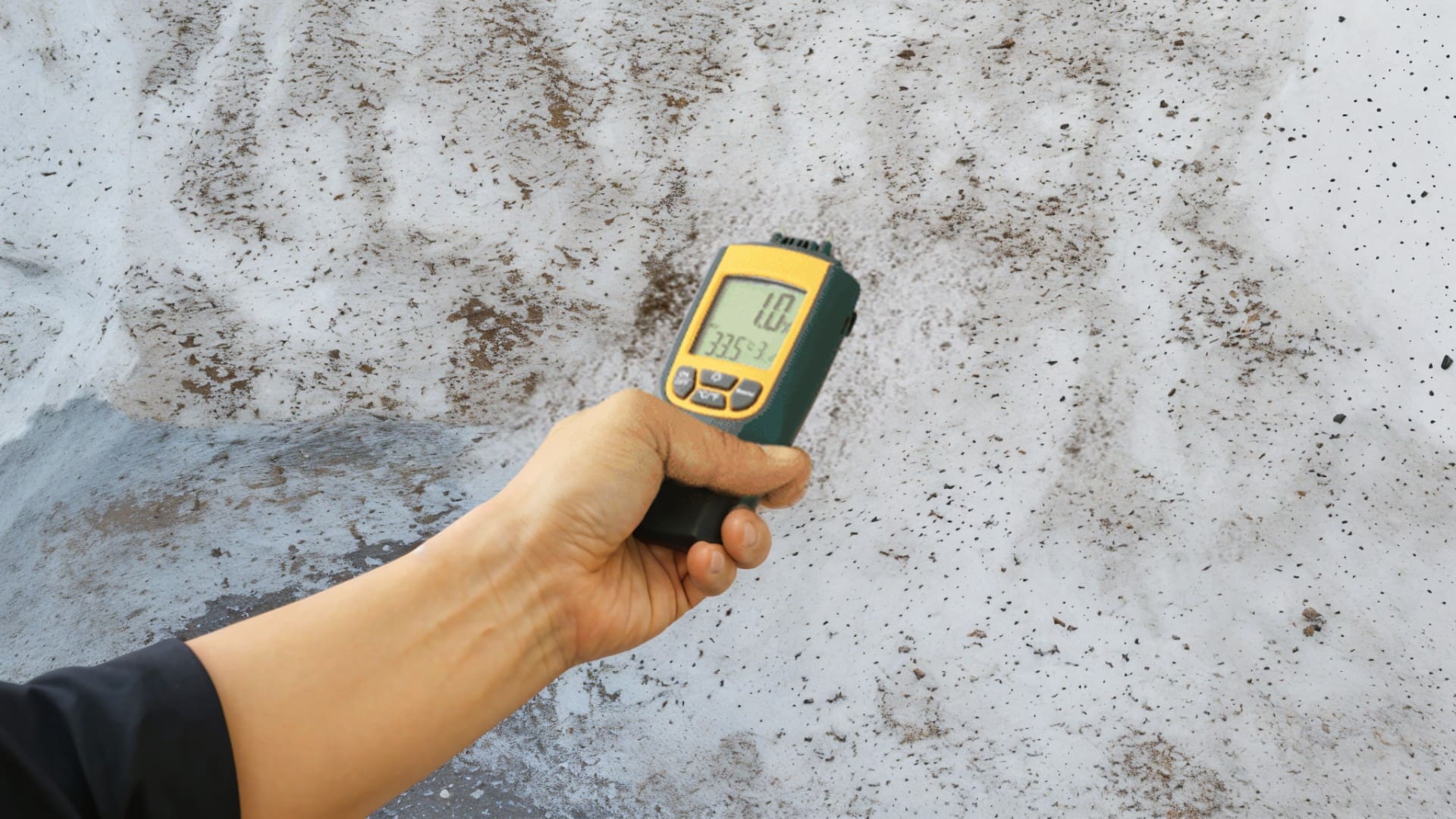
Ceilings are often overlooked—until something goes wrong. When water damage appears on your ceiling, it’s rarely subtle for long. What starts as a faint stain or tiny bubble can quickly evolve into structural damage, mold growth, and costly repairs. Spotting the early signs of water damage on a ceiling can make all the difference between a quick fix and a major renovation.
In this blog, we’ll break down how to recognize the first signs of ceiling water damage, explore its most common causes, and explain why STOP Restoration is Winston-Salem’s trusted name when water damage strikes.
Common Causes of Ceiling Water Damage
Understanding where the water might be coming from is the first step in tackling the issue. Some of the most frequent culprits include:
- Leaky Roofs: Damaged shingles, flashing, or aging roofing materials can allow rainwater to seep through and pool above your ceiling.
- Plumbing Leaks: Pipes running through the ceiling, especially in multi-story homes, may leak due to corrosion, faulty joints, or burst pipes.
- HVAC Condensation: Poorly insulated ducts or malfunctioning air conditioning units can cause condensation that eventually drips down onto the ceiling.
- Overflowing Fixtures: Bathtubs, toilets, and sinks from upper floors that overflow can lead to sudden and visible water intrusion.
- Attic Moisture: Poor ventilation or insulation in attics may lead to condensation buildup, which seeps down into the ceiling over time.
First Signs to Watch For
- Discoloration or Stains – This is one of the earliest and most telltale signs. Water-damaged ceilings often show up as yellowish, brown, or rust-colored spots. These stains typically grow over time and may appear in circular patterns or irregular shapes.
- Bubbling or Peeling Paint – As water accumulates behind your ceiling paint, it can cause bubbling, peeling, or flaking. This is especially noticeable on flat, painted ceilings where water interrupts the adhesive bond between paint and drywall.
- Sagging Ceiling Material- When water saturates the drywall or plaster in your ceiling, the material becomes heavy and starts to sag. This can appear as subtle dips or, in more severe cases, large bulges that are at risk of collapse.
- Musty Odors – Even if you don’t see visible signs yet, a persistent damp or musty smell in a room—especially after it rains—can indicate hidden water damage and possibly mold growth inside the ceiling.
- Mold Spots or Mildew– Dark spots or patches on the ceiling might be mold, especially in humid areas or after long-term leaks. Mold is not only a sign of water damage but also a serious health concern that needs immediate attention.
- Soft or Spongy Texture- If you touch the ceiling and it feels soft, spongy, or crumbly, that indicates significant moisture saturation. This often suggests prolonged water exposure and potential weakening of the structure.
Why Fast Action Is Essential
Delaying repairs when you notice early water damage signs can lead to:
- Structural deterioration
- Mold infestations
- Electrical hazards (if water reaches wiring)
- Decreased property value
- Higher repair costs over time
Early detection and professional intervention are your best lines of defense.
Trust STOP Restoration in Winston-Salem
When it comes to water damage, you need more than just a quick patch. You need trusted professionals who understand the full scope of the problem and deliver lasting solutions. That’s where STOP Restoration steps in.
Why Choose STOP Restoration?
- Expert Diagnosis: Their trained technicians use moisture detection tools and thermal imaging to find the exact source of the leak—even behind walls and ceilings.
- Fast Emergency Response: Available 24/7, STOP Restoration is always ready when disaster strikes.
- Comprehensive Services: From drying and dehumidifying to repairing drywall and eliminating mold, they handle every aspect of the restoration process.
- Trusted Locally: As a leading name in water damage restoration in Winston-Salem, STOP Restoration has built a strong reputation for integrity, professionalism, and high-quality work.
- Insurance Assistance: They work with your insurance provider to make the claim process as smooth as possible, helping reduce your stress during a challenging time.
What to Do If You See the First Signs
If you suspect water damage on your ceiling:
- Act Quickly – Shut off the water source if known (e.g., plumbing).
- Document the Damage – Take pictures for insurance records.
- Avoid DIY Repairs – Water damage may be more extensive than it appears on the surface.
- Call the Professionals – Contact STOP Restoration immediately to assess and mitigate the issue.
Final Thoughts
Water damage on your ceiling is more than just a cosmetic concern—it’s a signal that something deeper is wrong. By learning to recognize the early warning signs and acting promptly, you can avoid severe damage and protect the integrity of your home.
If you’re located in the Winston-Salem area, don’t wait until a small spot becomes a full-blown crisis. STOP Restoration is your go-to solution for fast, thorough, and reliable water damage restoration services. From initial inspection to complete restoration, they have you covered—literally and figuratively.
Don’t ignore the drip. Call STOP before it becomes a flood.
FAQ
1. What are the most common signs of water damage on a ceiling?
Common signs include brown or yellow stains, bubbling or peeling paint, sagging drywall, musty odors, and the appearance of mold or mildew. If you notice any of these, it’s important to act quickly.
2. What causes ceiling water damage?
The most frequent causes are roof leaks, plumbing leaks from upper floors, HVAC system condensation, overflowing bathtubs or sinks, and poor attic ventilation. Each cause requires a different remediation approach.
3. Is water damage on the ceiling dangerous?
Yes. Water-damaged ceilings can weaken structurally and collapse, especially if the material becomes oversaturated. Additionally, moisture encourages mold growth, which poses health risks like allergies and respiratory problems.
4. Can I repair ceiling water damage myself?
While small cosmetic fixes are possible, DIY repairs often miss hidden moisture that can cause future damage or mold. For comprehensive and lasting results, it’s best to call a professional like STOP Restoration.
5. How soon should I call a restoration company after noticing ceiling water damage?
Immediately. The longer you wait, the worse the damage can become. STOP Restoration in Winston-Salem offers 24/7 emergency response to prevent further harm and start the drying and repair process right away.
6. Will my homeowner’s insurance cover ceiling water damage?
It depends on the source of the water. Sudden events like pipe bursts are typically covered, but damage due to neglected maintenance (e.g., a long-ignored roof leak) might not be. STOP Restoration can assist with insurance claims.
7. How do professionals fix ceiling water damage?
The process involves:
- Inspecting and identifying the source of the leak
- Stopping the water intrusion
- Drying and dehumidifying the affected area
- Replacing or repairing damaged drywall
- Treating for mold if necessary
STOP Restoration follows a thorough, step-by-step restoration protocol for every case.
8. How long does the repair process take?
Depending on the extent of the damage, it can take anywhere from a few days to over a week. The drying phase typically lasts 2–4 days, followed by repairs. STOP Restoration aims to restore your home efficiently without compromising quality.
9. Will there be mold after ceiling water damage?
Mold can begin growing within 24–48 hours of water exposure. That’s why early detection and professional drying are crucial. STOP Restoration uses advanced moisture detection tools to ensure all areas are fully dry and mold-free.
10. Why choose STOP Restoration in Winston-Salem for ceiling water damage repair?
STOP Restoration is a trusted local name known for:
- Fast 24/7 response
- Licensed and certified technicians
- Full-service restoration from diagnosis to repair
- Insurance support
- Outstanding customer reviews in the Winston-Salem area
With STOP, you get peace of mind and a fully restored home.




